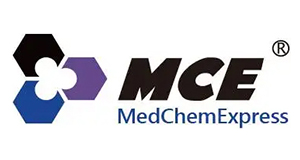Lipopolysaccharides, from P. aeruginosa 10
Lipopolysaccharides, from P. aeruginosa 10
Artikelnummer
MEXHY-D1056E-5
Verpackungseinheit
5 mg
Hersteller
MedChemExpress
Verfügbarkeit:
wird geladen...
Preis wird geladen...
Product Description: Lipopolysaccharides from P. aeruginosa 10 are lipopolysaccharide endotoxins composed of an O-specific antigen chain, a core oligosaccharide, and lipid A. The lipopolysaccharides from P. aeruginosa 10 have a fatty acid composition that differs from that of typical Enterobacteriaceae, with unusually high levels of phosphorylation (with detected triphosphate residues) and a unique external region of the core oligosaccharide, while the O-specific side chains are often rich in novel amino sugars. The susceptibility of Lipopolysaccharides from P. aeruginosa 10 to viruses is related to the high molecular weight polysaccharide content in its components. The absence of high molecular weight polysaccharides increases its sensitivity to bacteriophages[1][2][3][4][5][6].
Formula: N/A
References: [1]Kabanov DS, et al. Structural analysis of lipopolysaccharides from Gram-negative bacteria. Biochemistry (Mosc). 2010 Apr;75(4):383-404./[2]Cai KC, et al. Age and sex differences in immune response following LPS treatment in mice. Brain Behav Immun. 2016 Nov;58:327-337./[3]Heinrichs DE, et al. Molecular basis for structural diversity in the core regions of the lipopolysaccharides of Escherichia coli and Salmonella enterica. Mol Microbiol. 1998 Oct;30(2):221-32./[4]Ying Liu, et al. Podocyte-Released Migrasomes in Urine Serve as an Indicator for Early Podocyte Injury. Kidney Dis (Basel). 2020 Nov;6(6):422-433./[5]Wilkinson S G. Composition and structure of lipopolysaccharides from Pseudomonas aeruginosa[J]. Reviews of Infectious Diseases, 1983, 5(Supplement_5): S941-S949./[6]Cryz Jr S J,et al. Role of lipopolysaccharide in virulence of Pseudomonas aeruginosa[J]. Infection and immunity, 1984, 44(2): 508-513.
Molecular Weight: N/A
Research Area: Inflammation/Immunology
Solubility: H2O : 25 mg/mL (ultrasonic)
Target: Toll-like Receptor (TLR)
Formula: N/A
References: [1]Kabanov DS, et al. Structural analysis of lipopolysaccharides from Gram-negative bacteria. Biochemistry (Mosc). 2010 Apr;75(4):383-404./[2]Cai KC, et al. Age and sex differences in immune response following LPS treatment in mice. Brain Behav Immun. 2016 Nov;58:327-337./[3]Heinrichs DE, et al. Molecular basis for structural diversity in the core regions of the lipopolysaccharides of Escherichia coli and Salmonella enterica. Mol Microbiol. 1998 Oct;30(2):221-32./[4]Ying Liu, et al. Podocyte-Released Migrasomes in Urine Serve as an Indicator for Early Podocyte Injury. Kidney Dis (Basel). 2020 Nov;6(6):422-433./[5]Wilkinson S G. Composition and structure of lipopolysaccharides from Pseudomonas aeruginosa[J]. Reviews of Infectious Diseases, 1983, 5(Supplement_5): S941-S949./[6]Cryz Jr S J,et al. Role of lipopolysaccharide in virulence of Pseudomonas aeruginosa[J]. Infection and immunity, 1984, 44(2): 508-513.
Molecular Weight: N/A
Research Area: Inflammation/Immunology
Solubility: H2O : 25 mg/mL (ultrasonic)
Target: Toll-like Receptor (TLR)

 English
English










